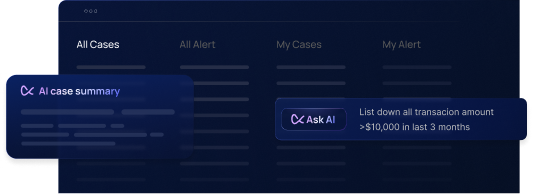In today's digitized world, convenience and efficiency are driving forces behind innovation in financial transactions. The rise of online banking, e-commerce, and digital wallets has transformed how we transact, opening up a world of opportunities for both businesses and consumers. However, this digital revolution has also paved the way for an escalating problem that threatens to undermine these benefits - card fraud.
Card fraud refers to any fraudulent activity that involves unauthorized use of a payment card, typically a credit or debit card, to steal funds or sensitive information. This nefarious practice has seen an alarming increase in recent years, with criminals exploiting advanced technology and the anonymity of the internet to commit increasingly sophisticated forms of fraud. In 2018 alone, global card fraud losses amounted to nearly $33 billion. This staggering figure reflects a growing issue that poses significant threats to businesses, financial institutions, and customers alike.
For businesses and financial institutions, the impact of card fraud is two-fold. On one hand, they face direct financial losses from fraudulent transactions, often coupled with the cost of reimbursing affected customers. On the other hand, they risk substantial reputational damage that can erode customer trust and loyalty. This is a crucial concern in an industry where trust and security form the bedrock of customer relationships.
For customers, falling victim to card fraud can lead to devastating financial losses and a breach of personal information. Moreover, the recovery process can be a lengthy and stressful ordeal, causing significant emotional distress and a loss of faith in their financial provider.
Given the pervasive and evolving threat of card fraud, it is crucial for stakeholders to understand its many forms and the preventative measures they can take. By exploring card fraud in depth, financial institutions, businesses, and customers can equip themselves with the knowledge and tools to counter this rising menace. This understanding is the first step towards a secure financial future for all, where the promise of digital transactions can be fully realized without the looming shadow of card fraud.
In the sections that follow, we will delve deeper into the types of card fraud, the challenges and complexities presented by the digital age, and the importance of implementing comprehensive fraud prevention strategies. Through this exploration, we hope to provide a clear path forward in the fight against card fraud.
Understanding card fraud
To effectively combat card fraud, one must first understand its various forms and how they occur. At its core, card fraud involves the unauthorized use of a payment card, whether it be credit, debit, or even prepaid cards, to unlawfully obtain funds or sensitive information from the cardholder. Despite this common thread, the methods criminals use to perpetrate card fraud can significantly vary. Here, we delve into four prevalent types of card fraud: card-not-present fraud, application fraud, counterfeit card fraud, and lost or stolen cards.
Card-Not-Present fraud
Card-not-present (CNP) fraud is perhaps the most prevalent type of card fraud in today's digital age. It occurs when fraudulent transactions are made using card information without the physical card being presented. This type of fraud is common in online, phone, and mail transactions where the fraudster only needs to know the card details, such as the card number, expiry date, and CVV number. CNP fraud has surged with the growth of e-commerce, with fraudsters exploiting the relative anonymity of online transactions and the difficulty of verifying customer identities remotely.
Application fraud
Application fraud involves criminals applying for a new credit or debit card in someone else's name. This requires obtaining personal and financial information about the victim, often through means such as identity theft, phishing scams, or data breaches. Once the fraudster has received the card, they can use it as they wish until the fraud is detected and the card is blocked.
Counterfeit card fraud
Counterfeit card fraud involves the creation of fake cards using stolen card information. These counterfeit cards can be used in face-to-face transactions, typically until the card is reported and blocked. Counterfeit card fraud has become less prevalent with the advent of EMV (Europay, MasterCard, and Visa) chip cards, which are significantly harder to clone than the older magnetic stripe cards. However, it remains a concern in regions where chip cards are not yet the norm.
Lost or stolen cards
This is one of the simplest forms of card fraud. It involves the unauthorized use of lost or stolen cards. Once a criminal has physical possession of the card, they can make purchases or withdraw money until the cardholder notices the missing card and reports it to their bank. The widespread introduction of personal identification numbers (PINs) and transaction alerts has helped to reduce this type of fraud, but it remains a risk, especially for contactless cards, which don't always require a PIN for small transactions.
Each type of card fraud presents its unique challenges and complexities. This makes the fight against card fraud a multifaceted task requiring a blend of preventive measures, from sophisticated real-time monitoring technologies to robust customer identity verification processes. As we delve into these measures, it's essential to remember that successful fraud prevention is often about staying one step ahead of the criminals. As security measures evolve, so too do the methods of those intent on bypassing them. Thus, continual learning, adaptation, and innovation are critical in this ongoing battle against card fraud.
The growing threat of card fraud in the digital age
As we navigate the twenty-first century, we find ourselves in the midst of a digital revolution that is reshaping almost every aspect of our lives. This revolution, with its advancements in technology and rapid digitization, has brought forth significant transformations in the way we transact, ushering in an era of unprecedented convenience and efficiency. However, as with any significant leap forward, this digital age has also presented its own set of challenges, and in the realm of financial transactions, one of these challenges is the escalating problem of card fraud.
The proliferation of online banking, digital wallets, and e-commerce has made it easier than ever for consumers to make purchases, transfer funds, and manage their finances with just a few clicks or taps. While this convenience is a massive boon to consumers and businesses alike, it has also provided fraudsters with new opportunities to exploit.
The double-edged sword of technology
One could argue that technology is a double-edged sword in the fight against card fraud. On one hand, it has facilitated the creation of increasingly sophisticated tools to detect and prevent fraudulent transactions. These tools, powered by advanced algorithms and artificial intelligence, can monitor transactions in real time, flagging any that seem suspicious based on predefined parameters or patterns of abnormal behavior.
On the other hand, the same technological advancements have also provided fraudsters with a broader array of tools to commit fraud. They can now easily purchase card details on the dark web, use phishing tactics to trick cardholders into revealing their card information, or exploit security flaws in online payment systems to commit card-not-present fraud. This constant arms race between fraudsters and those trying to stop them is a defining characteristic of card fraud in the digital age.
The anonymity of the internet
Another critical aspect of the digital age that has fueled card fraud is the anonymity provided by the internet. Fraudsters can hide behind the cloak of digital anonymity, making it harder for law enforcement agencies to track them down. Card-not-present fraud, in particular, has surged due to this anonymity, as criminals can use stolen card details to make online purchases without having to present the physical card.
Furthermore, the global nature of the internet means that a criminal in one country can easily commit card fraud against a victim in another country. This not only makes it more challenging to track and catch the criminals, but it also complicates matters from a legal standpoint, as different countries have different laws and regulations related to card fraud.
The role of data breaches
Finally, the rise of big data and the ever-increasing amount of personal and financial information stored online have led to an increase in data breaches. These breaches can give criminals access to thousands, if not millions, of card details, which they can then use to commit card fraud or sell on the dark web. Even seemingly innocuous information, such as email addresses or passwords, can be valuable to fraudsters, as they can use this information to carry out phishing attacks or attempt to commit identity fraud.
Given the growing threat of card fraud in the digital age, it is imperative that businesses, financial institutions, and consumers take proactive steps to safeguard against it. This involves implementing robust fraud prevention strategies, staying informed about the latest trends in card fraud, and adopting a culture of security that prioritizes protecting sensitive cardholder information. As we move forward, these measures will be critical in ensuring that the benefits of the digital revolution are not overshadowed by the risks.
Implementing fraud prevention strategies
As the threats of card fraud grow in complexity and sophistication, the need for comprehensive fraud prevention strategies becomes increasingly apparent. Financial institutions and businesses must be proactive, employing a range of measures to protect themselves and their customers from fraudsters. Here, we delve into four core strategies that can significantly bolster defenses against card fraud: real-time transaction monitoring, customer risk assessment, know your business (KYB) and Customer ID verification, and sanctions screening.
Real-time transaction monitoring
Real-time transaction monitoring serves as the frontline defense against card fraud. This technology involves continuously analyzing transaction data as it occurs to identify suspicious activity. Advanced algorithms and machine learning techniques can recognize patterns and behaviors indicative of fraudulent transactions.
For instance, a sudden flurry of high-value transactions on an account that typically has low transaction activity, or transactions occurring in unusual locations, may be flagged for further investigation. If a potentially fraudulent transaction is detected, an alert can be issued immediately, enabling swift action to prevent the transaction from going through or to block the card from further use. This real-time response significantly minimizes the potential damage caused by fraudulent activities.
Customer risk assessment
Understanding your customer's behavior and transaction patterns is vital in fighting card fraud. By assessing the risk posed by a customer or a particular transaction, financial institutions can better predict and prevent potential fraud.
This involves establishing a baseline of "normal" behavior for each customer. If a transaction deviates significantly from this baseline, it might be a sign of fraudulent activity. For instance, if a customer who typically makes small local purchases suddenly makes a large purchase overseas, it could be a red flag. Customer risk assessment relies heavily on data analysis and machine learning algorithms to identify these anomalies and assess risk effectively.
Know your business (KYB) and customer ID verification
Proper identification and verification of businesses and customers can go a long way in preventing card fraud. KYB practices involve verifying the legitimacy of businesses you're dealing with by checking their registration details, business history, and reputation.
Similarly, customer ID verification, also known as Know Your Customer (KYC), involves verifying the identity of your customers to ensure they are who they claim to be. This could involve checking government-issued IDs, using biometric verification, or asking security questions that only the customer would know the answer to. By ensuring that you're dealing with legitimate businesses and individuals, you can significantly reduce the risk of card fraud.
Sanctions screening
Another important step in preventing card fraud is sanctions screening. This involves checking businesses and individuals against global sanctions and watchlists to ensure that you're not dealing with entities associated with financial crime.
These lists include people and organizations involved in a variety of illegal activities, including terrorism, drug trafficking, and fraud. An up-to-date and thorough sanctions screening process can prevent you from inadvertently facilitating illegal activity, including card fraud.
Implementing these strategies can significantly bolster a financial institution's defenses against card fraud. However, it's important to remember that card fraud is a rapidly evolving threat, and staying ahead requires continual learning, adaptation, and innovation. By staying informed about the latest trends in card fraud and regularly updating and refining your fraud prevention strategies, you can ensure that you're well-equipped to tackle this ongoing challenge.
Importance of an integrated anti-money laundering (AML) compliance approach
The fight against card fraud extends beyond the confines of transaction monitoring and customer verification. To mount an effective defense, financial institutions must adopt a holistic approach that also incorporates a robust Anti-Money Laundering (AML) compliance program. This integrated approach is essential for numerous reasons.
Interconnectivity of financial crimes
Financial crimes are often interconnected. Card fraud, for instance, is frequently a precursor to money laundering. Fraudsters illicitly acquire funds through card fraud and then seek to introduce these funds into the legitimate financial system through a series of complex transactions designed to obscure the original source. By integrating AML compliance measures with card fraud prevention strategies, financial institutions can tackle this broader ecosystem of financial crime, targeting not just the initial fraudulent act but also subsequent illicit activities.
Regulatory obligations
AML compliance is not just a good practice; it's a regulatory obligation. Financial institutions across the globe are subject to stringent laws and regulations designed to prevent money laundering and other forms of financial crime. Non-compliance with these regulations can result in hefty fines and significant reputational damage. By adopting an integrated AML compliance approach, institutions can fulfill their regulatory obligations while also enhancing their card fraud prevention measures.
Risk-based approach
A central tenet of AML compliance is the risk-based approach. This involves tailoring prevention measures based on the level of risk associated with a particular customer or transaction. Low-risk entities may require less stringent controls, while high-risk entities require more thorough scrutiny. This same principle can be applied to card fraud prevention, allowing for more effective allocation of resources and more targeted prevention measures.
Role of technology
As part of an integrated AML compliance approach, financial institutions are increasingly turning to advanced technologies to help them monitor transactions, assess risk, and detect suspicious activities. Artificial intelligence (AI) and machine learning, for instance, can analyze vast amounts of data in real time, identify patterns that indicate potential fraud, and adapt to evolving tactics used by fraudsters. These technologies can provide significant advantages in the fight against card fraud, enabling a more proactive and effective approach to prevention.
In conclusion, the importance of an integrated AML compliance approach cannot be overstated. By aligning card fraud prevention measures with broader AML strategies, financial institutions can enhance their defenses against financial crime, fulfill their regulatory obligations, and better protect themselves and their customers. After all, in the fight against card fraud, a well-rounded defense is the best offense.
Conclusion: Future of card fraud prevention
In the face of an ever-evolving landscape of card fraud, the future undoubtedly lies in a unified, multi-pronged approach, bolstered by advanced technology. As our financial systems continue to navigate through the digital age, it has become increasingly clear that our defenses must evolve in tandem. Not only should they adapt, but they should anticipate and neutralize threats before they become critical issues.
With solutions like those offered by Flagright, financial institutions are empowered to do just that. Flagright provides comprehensive, no-code centralized AML compliance and fraud prevention services that streamline the process of monitoring and managing financial crime risks.
Leveraging AI, Flagright offers real-time transaction monitoring, allowing for immediate detection and mitigation of potential fraud risks. The platform's customer risk assessment, sanctions screening, KYB, and customer ID verification capabilities provide an additional layer of defense, ensuring that your organization is dealing with legitimate entities and helping identify any high-risk transactions.
In addition, Flagright's merchant monitoring and alerting service, which harnesses the power of GPT, allows financial crime teams to monitor merchants across multiple public sources and social media channels. This functionality eliminates manual monitoring efforts and significantly boosts operational efficiency, ensuring fast response times and maximum risk mitigation.
One of Flagright's defining features is its ability to seamlessly integrate with platforms like Salesforce, Zendesk, and HubSpot. This allows organizations to gather and consolidate their customer CRM correspondence within the Flagright case management system. Coupled with Flagright AI's summarizing capabilities, this integration further streamlines the investigative process, leading to substantial time savings, improved accuracy, and superior customer satisfaction.
Flagright also offers a case and alert narrative generator and a suspicious activity report (SAR) generator. The former drastically improves analyst performance on recurring writing and communication tasks, saving time and ensuring high-quality outcomes. The latter leverages NLP to extract key details from suspicious activities and automatically generates comprehensive, regulatory-compliant SARs. This not only saves a significant amount of time but also reduces the risk of errors and oversights.
What sets Flagright apart is not just the sophistication of its technology, but also the speed of its implementation. With an integration time frame of just 3 to 10 days, financial institutions can rapidly enhance their fraud prevention capabilities without disrupting their operations.
In the digital age, card fraud prevention requires a robust, integrated, and tech-driven approach. Companies like Flagright are leading the charge in this new era of fraud prevention, providing solutions that are not only powerful and efficient but also agile and adaptable.
To protect your financial institution from card fraud and to explore how Flagright can assist you in navigating this complex landscape, schedule a free demo with us. With Flagright, take control of your AML compliance and fraud prevention strategies, securing your institution's future in the digital age.
About the Author
Joseph Ibitola leads global demand generation at Flagright, an AI-native transaction monitoring and AML compliance platform. He drives marketing strategy, campaigns, and growth initiatives that help financial institutions adopt stronger compliance frameworks and reduce fraud risk. With expertise spanning fraud prevention, AML compliance, and financial risk management, Joseph also develops thought leadership and educational resources that position Flagright as a trusted partner to the finance industry.




.svg)






.webp)














